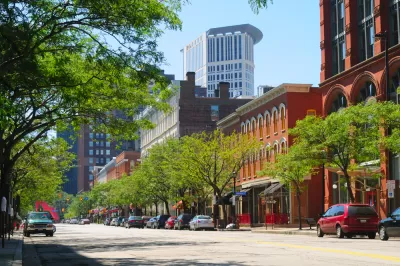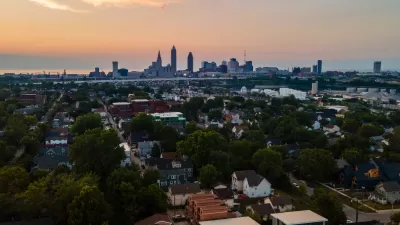A ULI-led symposium in Cleveland is looking at how an update of the city's outdated zoning code could revive some neighborhoods in the city.

During an all-day conference last week, Cleveland planners, developers, lawyers, community development officials, and architects came together to discuss, what was described as "an extensive dialogue on reshaping the code to encourage development and to make the city more attractive and livable." Reporting in The Plain Dealer, Steven Litt writes that the current code impedes walkability and separates land-uses, making it more difficult to create the pedestrian friendly environments urban dwellers are currently seeking.
One of the topics attendees are looking at is form-based zoning, which has been successfully implemented in several areas of the city. However, Cleveland's mayor is asking that the benefits of any zoning code changes be felt citywide.
As for Mayor Frank Jackson, he said he viewed form-based zoning as "a great tool, but as I tell my people, the measure of a tool is how it is used."
He said he would judge the new zoning on whether it enables economically challenged neighborhoods to participate in the growth that has occurred in a half-dozen popular areas, such as Ohio City, Tremont, University Circle and Detroit-Shoreway.
Developer Ron Ratner of Forest City advised in his key note address to the symposium that the city be careful in its approach to adopting form-based zoning in the city—understanding that it won't work in all areas. "You can't force the market to create density and walkability, but you can reinforce it where it does work," he said.
FULL STORY: Could a new zoning code make Cleveland a greener, healthier and more equitable city?

Alabama: Trump Terminates Settlements for Black Communities Harmed By Raw Sewage
Trump deemed the landmark civil rights agreement “illegal DEI and environmental justice policy.”

Planetizen Federal Action Tracker
A weekly monitor of how Trump’s orders and actions are impacting planners and planning in America.

Why Should We Subsidize Public Transportation?
Many public transit agencies face financial stress due to rising costs, declining fare revenue, and declining subsidies. Transit advocates must provide a strong business case for increasing public transit funding.

Understanding Road Diets
An explainer from Momentum highlights the advantages of reducing vehicle lanes in favor of more bike, transit, and pedestrian infrastructure.

New California Law Regulates Warehouse Pollution
A new law tightens building and emissions regulations for large distribution warehouses to mitigate air pollution and traffic in surrounding communities.

Phoenix Announces Opening Date for Light Rail Extension
The South Central extension will connect South Phoenix to downtown and other major hubs starting on June 7.
Urban Design for Planners 1: Software Tools
This six-course series explores essential urban design concepts using open source software and equips planners with the tools they need to participate fully in the urban design process.
Planning for Universal Design
Learn the tools for implementing Universal Design in planning regulations.
Caltrans
Smith Gee Studio
Institute for Housing and Urban Development Studies (IHS)
City of Grandview
Harvard GSD Executive Education
Toledo-Lucas County Plan Commissions
Salt Lake City
NYU Wagner Graduate School of Public Service




























